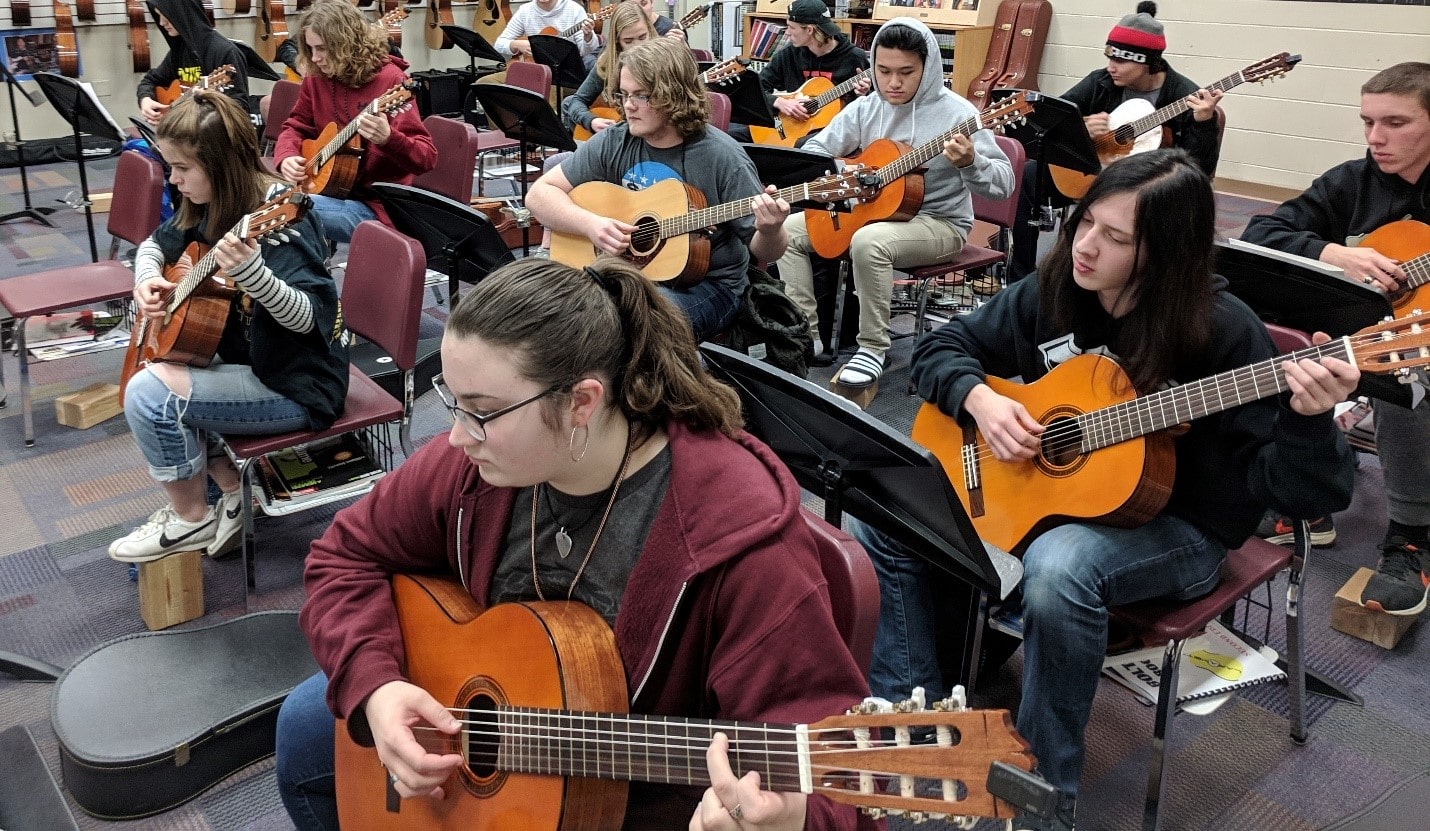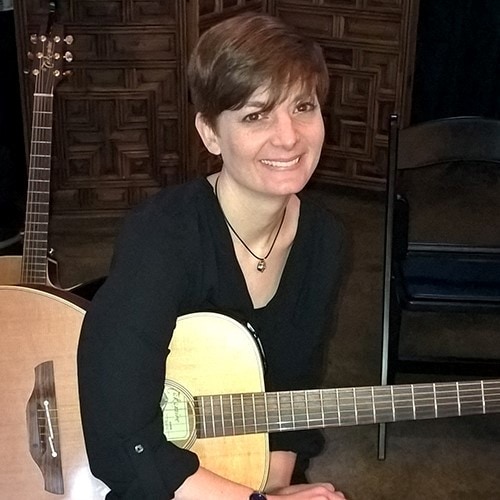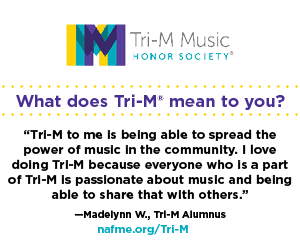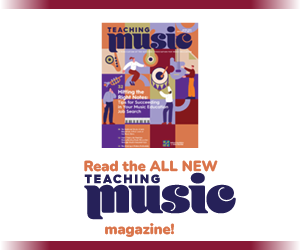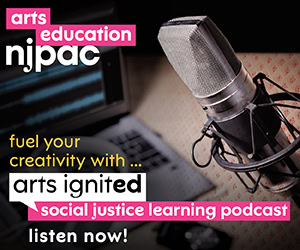/ News Posts / Guitar Class in the Show-Me State
Guitar Class in the Show-Me State
Number 16: The State of Missouri
By Thomas Amoriello Jr.
NAfME Council for Guitar Education Chair
Today we visit Lafayette High School in Wildwood, Missouri, with music educator Traci Bolton. Traci has been working for more than a decade to bring guitar experiences and quality education to the St. Louis County region. These include a classical ensemble with a dedicated solo and ensemble festival as well as a full rock show with lights and sound. These venues often feature original student composition and arrangements. On a national level, Traci has served on the National Association for Music Education (NAfME) Council for Guitar Education and the American String Teachers Association Guitar Task Force. Traci serves as a clinician at the district and state level helping teachers deliver quality guitar education. On behalf of the NAfME Council for Guitar Education and the Teaching Guitar Workshops, thank you, Traci, for advancing guitar education in the United States.
Please tell us about your school and overall music program.
Lafayette High School is part of the Rockwood School District and is located in west St. Louis County. We are fortunate to have a truly supported fine arts program. Students have the opportunity to participate in a multilevel guitar program with additional after school activities, as well as highly successful band, choir, and orchestra programs. Students have the choice to participate in any of these programs for the entirety of their high school career. Those students who wish to continue in music after high school tend to be very active in more than one of our programs.

Photo courtesy of Traci Bolton
Please tell us about your own personal musical background growing up and your collegiate experience.
My parents were both enthusiastic singers. My brother and I were introduced to singing at a very young age. I can honestly say that there was never a moment growing up that music wasn’t playing in the house. I entered band in middle school and fell in love with playing instruments. My band teacher, Mr. Neil Casey, was such an inspirational teacher for me. He made his classroom a place where I could learn and succeed. I felt important and appreciated. His nurturing and my love for playing instruments lead to a bachelor and masters in music education. I played in any and every ensemble that was available to me.
Growing up in a smaller town, guitar was not something that was considered part of a mainstream music program. It was more something that happened in music store basements, not in classrooms. I taught in public school education for five years in different schools before I was in a place where guitar in the classroom was a possibility.
How do the guitar family instruments fit into your teaching?
Lafayette High School offers a multilevel guitar program. Students may begin the process at any time in high school and continue as long as they wish. The guitar is such a versatile instrument. I am able to use it as a conduit for teaching music literacy, theory, chordal structure, and ear training. We study classical, jazz, and rock, enjoying all of their differences while appreciating how they share a common foundation.
What obstacles did you face when you were first hired at your school? Now?
My biggest challenge when I started to teach guitar was changing the idea about what the class could be. It existed as a one semester class that had no direction towards anything more than how to read single line melodies. Being a guitar player, I had great ideas about how the class could develop and students could learn the fundamentals of music and also attain quality guitar skills. I had several years where I did double duty as Assistant Band Director of a very active concert, marching, and jazz program, as well as trying to create opportunities for my guitar students. That presented a huge challenge to balance time.
I now teach guitar full time with a multilevel program. The obstacles I face are more along the lines of getting everyone into guitar who wants to be part of the program. My classes can also offer a wide range of playing abilities. It is a delicate balancing act to find the challenges for those advanced students who can layer on top of the material others may be learning for the first time.
What kind of classes related to the guitar do you teach?
I teach Guitar 1, Guitar 2, and Guitar Ensemble. I also offer jam band opportunities after school for students who want to explore playing in a rock band setting. We currently have five different groups encompassing more than 40 students. Guitar Ensemble and the Jam Bands perform at a variety of different events in the school.

Photo courtesy of Traci Bolton
What would you like to say to the non-guitarist music educator who is about to or interested in incorporating the guitar into their program?
Incorporating guitar into your music program is one of the best decisions you can make! Guitar’s harmonic component is a great place to experience theory in action with chord progressions. It is a wonderful tool for training your ears to hear these changes and how to function within them. Its melodic element is fantastic for learning reading. Perhaps one of the greatest gifts of guitar is the fact that you can teach problem-solving. The nature of the guitar allows you to play both melodies and chords in multiple places. Students can be challenged to find more efficient ways of performing a musical segment to increase speed and minimize movement.
“Guitar’s harmonic component is a great place to experience theory in action with chord progressions.”
Regardless of the level of guitar taught, you will find that you have opened a door to many new musicians joining your program who were not part of school music before.
Do you have any success stories you would like to share about students (musical and non-musical)?
My biggest success stories are connections with students. Guitar has allowed students who were not necessarily engaged in high school to find a place to be connected. Guitar also brings students into the music department who perhaps missed the band and orchestra channel and still wish to learn music.
We do group pictures for the yearbook. Any of the students who participate in extracurricular activities get to be part of the pictures. I love when I hand out passes to my jam band students and have to explain what it is because they have not been in any activities before.
I also love stories from students who have gone on to college. They check back in to see how class is going and update me on what they are still playing. Perhaps my favorite was a student who is letting me know that he had started giving group lessons to the other students on his dorm floor so that he had other guitar players who could play with him on his level. Even though he is not continuing music as a career, he is continuing it as part of his life and sharing that knowledge with others so that they too can be participants in the music of life.
I have students who are pursuing music as a career. I am so very fortunate that they feel such a connection to the program that when they come back to town, they visit the guitar classes and pass on the knowledge they have acquired out in the music world.
What do you tell your talented students who are planning to pursue music or guitar studies in high school or college after they finish with you?
I tell all of my high school students who are looking to pursue music to think outside the box. We tend to get stuck with the idea that there is only performance and education. There are so many careers involving music that you shouldn’t think you have only two options. Many schools are starting to realize the idea of the music business world and what possibilities that creates. There are venues that need management, tours to be organized, commercials, movies and television shows that need the perfect music for the mood, and those are just a few ideas.
Any student who wants to pursue performance is going to need to understand how business works because they are ultimately becoming a small business entrepreneur. Having sales, marketing, and contract knowledge is going to be vital to their success.
Do you have any networking or advocacy tools that have worked for you promoting your program that would help other educators?
My biggest recruitment comes from students. I focus on student involvement and making sure that they are getting an education in guitar with strong fundamentals and understanding that allows them to continue to play after they have left me. When students find the class engaging and relevant, they tell friends. Those friends join and tell more friends. The parents start to notice that their child is playing the instrument more. Kids are staying after school to participate in even more guitar, and parents want to support this. Principals see that students who weren’t necessarily connected to school before now have a connection to something at school that keeps them coming day after day. These things start to build a program that can sustain for years.

Photo courtesy of Traci Bolton
Please tell us about your involvement in Teaching Guitar Workshops.
I started with Teaching Guitar Workshops attending a Level 1 clinic. I was working to grow my guitar program, and Teaching Guitar Workshops was the first I had heard of others that were incorporating guitar in a classroom setting. I kept in touch with my clinicians and was asked to intern. My knowledge of being both a band director and a guitar instructor allows me to talk to those teachers who are not guitar teachers on how to best bridge between band, choir, orchestra, and guitar.
“It is a joy to spread the guitar gospel to others who are thinking about adding guitar to their music programs.”
Traveling with Teaching Guitar Workshops, I have met so many amazing educators who are excited to bring new opportunities to their students. It is a joy to spread the guitar gospel to others who are thinking about adding guitar to their music programs.
What type of lesson plans have you done for your classes that may be unique?
One of my favorite projects I do with my ensemble class is songwriting and production. We are working on all of the elements of music; how chords are organized, using chords to create melodies, how layers can add dimension to a piece. The songwriting allows a student to take this knowledge and put it to practical use. Music isn’t just something to recreate from someone else, it is something that you can create. Creating it yourself takes you to a whole new level of understanding.
Do you do any musical performances or activities outside of your public school teaching duties?
I do my best to play outside of school, but time is scarce. I enjoy performing for weddings and such. I keep myself pretty busy rehearsing and preparing my students for performance. I get so much joy watching them experience the thrill of performance for an audience.
What kind of future do you see for guitar in music education in the Missouri school system?
I see a bright future for guitar education in Missouri. Each year I am approached by teachers who are starting a guitar class and want to talk about structure and curriculum.
Read more “Guitar Class in 50 States” articles:
- Number 50: The Granite State (New Hampshire)
- Number 49: The Green Mountain State (Vermont)
- Number 48: The Mountain State (West Virginia)
- Number 47: The Hoosier State (Indiana)
- Number 46: The Mount Rushmore State (South Dakota)
- Number 45: The Pine Tree State (Maine)
- Number 44: The Badger State (Wisconsin)
- Number 43: The Constitution State (Connecticut)
- Number 42: The Evergreen State (Washington)
- Number 41: The Pelican State (Louisiana)
- Number 40: The Beaver State (Oregon)
- Number 39: The Equality State (Wyoming)
- Number 38: The Empire State (New York)
- Number 37: The Old Line State (Maryland)
- Number 36: The Centennial State (Colorado)
- Number 35: The Bay State (Massachusetts)
- Number 34: The Sooner State (Oklahoma)
- Number 33: The Prairie State (Illinois)
- Number 32: The Hawkeye State (Iowa)
- Number 31: The Volunteer State (Tennessee)
- Number 30: The Palmetto State (South Carolina)
- Number 29: The Natural State (Arkansas)
- Number 28: The Tar Heel State (North Carolina)
- Number 27: The Magnolia State (Mississippi)
- Number 26: The Peace Garden State (North Dakota)
- Number 25: The Treasure State (Montana)
- Number 24: The First State (Delaware)
- Number 23: The Buckeye State (Ohio)
- Number 22: The Yellowhammer State (Alabama)
- Number 21: The Sunflower State (Kansas)
- Number 20: The Great Lakes State (Michigan)
- Number 19: The Lone Star State (Texas)
- Number 18: The Bluegrass State (Kentucky)
- Number 17: The Golden State (California)
- Number 15: The Keystone State (Pennsylvania)
- Number 14: The Last Frontier State (Alaska)
- Number 13: The Beehive State (Utah)
- Number 12: The Peach State (Georgia)
- Number 11: The Cornhusker State (Nebraska)
- Number 10: The Gem State (Idaho)
- Number 9: The Old Dominion (Virginia)
- Number 8: The Aloha State (Hawaii)
- Number 7: The Land of Enchantment (New Mexico)
- Number 6: The Sunshine State (Florida)
- Number 5: The Grand Canyon State (Arizona)
- Number 4: The Ocean State (Rhode Island)
- Number 3: The North Star State (Minnesota)
- Number 2: The Silver State (Nevada)
- Number 1: The Garden State (New Jersey)
About the author:

Photo Credit: Jon Carlucci
Thomas Amoriello Jr. serves as the chair on the NAfME Council for Guitar Education and is also the Chairperson for the New Jersey Music Education Association. Tom has taught guitar classes for the Flemington Raritan School District in Flemington, New Jersey, since 2005 and was also an adjunct guitar instructor at Cumberland County College, New Jersey, for five years. He has earned a Master of Music Degree in Classical Guitar Performance from Shenandoah Conservatory and a Bachelor of Arts in Music from Rowan University. He is the author of the children’s picture books A Journey to Guitarland with Maestro Armadillo and Ukulele Sam Strums in the Sand, both available from Black Rose Writing. He recently made a heavy metal recording with a stellar roster of musicians including former members of Black Sabbath, Whitesnake, Ozzy Osbourne, Yngwie J. Malmsteen’s Rising Force, and Dio that was released on H42 Records of Hamburg, Germany. The record released on 12-inch vinyl and digital platforms has received favorable reviews in many European rock magazines and appeared on the 2018 Top 15 Metal Albums list by Los Angeles KNAC Radio (Contributor Dr. Metal). Visit thomasamoriello.com for more information.
Interested in reprinting this article? Please review the reprint guidelines.
The National Association for Music Education (NAfME) provides a number of forums for the sharing of information and opinion, including blogs and postings on our website, articles and columns in our magazines and journals, and postings to our Amplify member portal. Unless specifically noted, the views expressed in these media do not necessarily represent the policy or views of the Association, its officers, or its employees.
Catherina Hurlburt, Marketing Communications Manager. May 23, 2019. © National Association for Music Education (NAfME.org)
Published Date
May 23, 2019
Category
- Ensembles
Copyright
May 23, 2019. © National Association for Music Education (NAfME.org)
